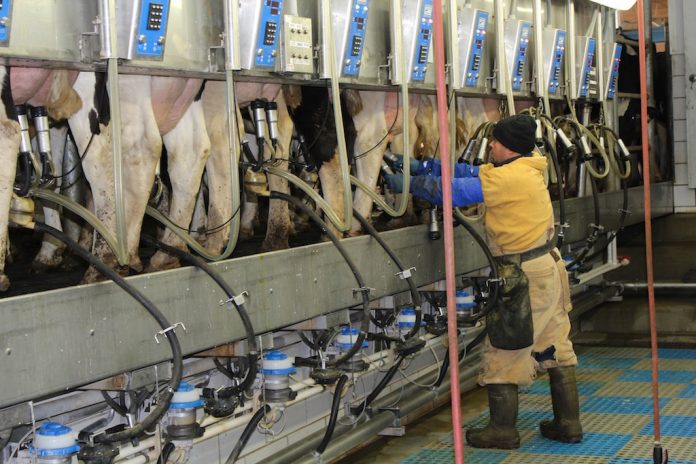Opening the January final milk check for 2020 was a lot more fun than opening the 2019 January final. Why?
While the January 2020 Class III price of $17.05 was down $2.32 from December’s $19.37, December’s Producer Price Differential (PPD) was a negative 93 cents compared to January’s positive 89 cents, so the net difference felt in the milk check was a decline of 50 cents per hundredweight.
While disappointing, if we compare that to the Class III plus PPD a year earlier of $15.46 we were $2.48 per hundredweight higher than last year. Milk prices increased slowly in 2019, remaining under $16 through April and then steadily increasing throughout the rest of the year.
Cow numbers
Just about the opposite trend was seen for cow numbers (finally!) That drop in cow numbers moderated U.S. daily milk production, supporting prices for the last half of the year.
The National Agriculture Statistics Service reported Jan. 1 cow numbers at 9.334 million head, slightly lower than December’s numbers, surely continued good news for milk prices … if we don’t start adding to cow numbers again.
Liquidity
One casualty of extended low milk prices has been availability of cash on dairy farms. Financially, we refer to that availability of cash — the ability to pay bills when they are due, meet family living needs and make loan payments on time — as liquidity.
The more liquid a business is, the more cash there is available when needed. Liquidity is easy to measure using a good balance sheet that captures the farm’s current assets and current liabilities.
Current assets include cash in checking and savings accounts, feed and crop inventories, market livestock, supplies, prepaid expenses, accounts receivable, growing crops and similar items that will be used up within a year and are easily turned to cash at market price.
Current liabilities include accounts payable, balances on lines of credit and credit cards and principal due in 12 months on term debt.
Current ratio
Current ratio (CR) is simply a comparison of current liabilities to current assets. The 19 conventional dairy farms participating in the 2018 Ohio Farm Business Analysis program had an average CR of 1.45 (Table 1). This meant that they had $1.45 of current assets for every $1 of current liabilities. Five of the farms had a CR of less than 1.0 which indicates serious challenges meeting cash obligations. The five farms that generated the highest net return per cow (high 25%), had a slightly higher CR of 1.69.
As groups, neither all farms nor the high 25% meet the 15 Measures of Dairy Farm Competitiveness’s long-term goal of CR>3.0. However, four of the 19 farms did meet or exceed this goal, though that did not necessarily place them in the high 25% for net return per cow.
Working capital
Measuring working capital, is another way of monitoring liquidity. It is simply the difference between current assets and current liabilities. While working capital is simply a number that we hope is both positive and large, comparing it to the gross income of the farm business gives us a way to determine if we have enough for the size of the business. Just as the current ratio was low compared to benchmarks, so was working capital to gross income for our 2018 dairy farms. Six farms met or exceeded the 15 Measures benchmark.
As milk prices improve, dairy farms must strategically rebuild cash reserves to better withstand fluctuating prices for milk and feed ingredients in the future. Measuring and monitoring those reserves should be part of the plan.
The Ohio Farm Business Analysis Program can help your farm get the numbers captured and calculated for your dairy farm as well as provide benchmark graphics including your farm’s current and historic numbers. Contact us at 330-533-5538 to get started on the 2019 analysis now.














